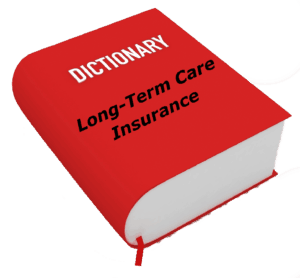Many “hybrids” have pitfalls that no one is talking about!
Excerpt from Scott’s newest book: “The Simple LTC Solution: How to Protect Your Life’s Savings with a Long-Term Care Partnership Program”
Hybrids are “OR” “OR” “OR”, not “AND” “AND” “AND”
Hybrid policies are sold as one policy that gives you three different benefits:
“cash value” AND
“long-term care benefits” AND
“a death benefit”
However, you canNOT get all three benefits from the policy. You can only get one. If you buy a hybrid, you’ll get:
“cash value” OR
“long-term care benefits” OR
“a death benefit”
Hybrids are “If you use it, you lose it” policies.
If you use the cash value in the hybrid policy,
• you lose the long-term care benefits and
• you lose the death benefit
If you use the long-term care benefits in the hybrid policy,
• you lose the cash value and
• you lose the death benefit
If you’re healthy a hybrid is usually three times the cost of a traditional long-term care policy, but you’re NOT getting three times the benefits because if you use one of the benefits, you lose the other two.
Many hybrids can lapse even if you pay the premiums on-time every year
Hybrids are sold as the best of all worlds with three different ways to benefit from the policy:
1) If you need cash, you can cancel the policy and get your cash.
2) If you need long-term care, you can use the death benefit to pay for your long-term care.
3) If you don’t need long-term care, then your heirs will get the tax-free death benefit.
OR
4) you and your heirs could get NOTHING from the policy.
Unfortunately, this is a very real possibility and it is rarely discussed.
Even if you pay your premiums on-time, every year, and NEVER miss a payment, the policy could lapse.
Not every hybrid, but many hybrid policies can lapse.
If the policy lapses, you will lose every penny you put into the policy.
If the policy lapses you will get NOTHING from the policy:
No cash value.
No long-term care benefits.
No death benefit.
Most hybrid policies are NOT guaranteed to stay in-force for the rest of your life. They might lapse when you reach age 90 or 85 or 80 or maybe even sooner than that. The only way to know that the policy will remain in-force for life is if you look at the page of the illustration that shows “guaranteed values”. That page will show you the guaranteed death benefit every year of the policy. If the death benefit is zero before you reach age 100 that means you could lose everything you put into the policy and get NOTHING out of the policy. All your premiums would be wasted.
Hybrids are often advertised as crediting you with 4% interest (or a similar interest rate). However, after policy fees the actual interest rate is usually negative. When you look at the illustration, go to the page that shows “Guaranteed Values”. Then look on the column that says, “Cash Surrender Value”. The “Cash Surrender Value” is what you’ll receive if you cancel the policy. You’ll see that the “Cash Surrender Value” is usually less than what you’ve put into the policy. With a few policies, the “guaranteed cash surrender value” may grow to be higher than the sum of your premium payments, but even then, the actual growth is usually less than 1%.
Long-term care insurance can pay benefits sooner
In 1996, the federal government created standards by which long-term care insurance policyholders would qualify to receive benefits. Every new policy today, that meets the federal guidelines, has three ways for the policyholder to qualify for benefits. Benefits are payable if the policyholder requires:
1) “hands-on” assistance to perform any two of the six* activities of daily living OR
2) “stand-by” assistance to perform any two of the six* activities of daily living OR
3) supervision to protect the policyholder’s health and safety due to a cognitive impairment
*The six activities of daily living are: bathing, dressing, eating, toileting, getting out of a bed or chair, and maintaining continence.
I have a close relative who is in an assisted-living facility. She has a long-term care insurance policy that meets the federal guidelines. A few times each week she needs “hands-on” assistance to help with bathing. Every morning and every night she needs “stand-by assistance” to change her clothes. She has problems with balance. Dressing and undressing requires a lot of balancing. She needs someone within arm’s reach to make sure she doesn’t fall and injure herself while she’s changing her clothes.
Most hybrid policies use “chronic illness” riders. “Chronic illness” riders do not have to meet the federal guidelines for long-term care insurance. In particular, “chronic illness” riders do not include “stand-by” assistance as a means for the policyholder to qualify for benefits. If my relative had a hybrid policy with a “chronic illness” rider she would not be receiving any benefits from the policy because she needs “stand-by” assistance with one of the activities of daily living. Fortunately, she has a long-term care insurance policy that meets the federal guidelines and the policy is covering the full cost of the assisted-living facility.
Answer a few short questions and get a customized quote within 24 hours.
We guarantee your information will never be sold, transferred, or distributed to any other entity for commercial purposes. Click here to read our full privacy statement.




Facebook Comments